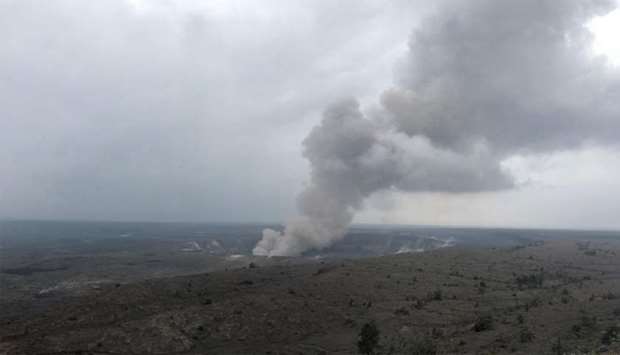A Hawaii volcano that has been oozing lava and burping steam for days may be gearing up for a huge eruption, scientists have warned, prompting the closure of Volcanoes National Park on Friday.
It is the newest threat from the Kilauea volcano, which began erupting last Thursday on the US state's Big Island, the National Park Service said.
Scientists say lava levels in the crater are going down, meaning it might be clogging and building up for a mighty blast.
Movement of the molten rock opened space for lava at the summit to drain underground, reducing the height of a lava lake at the summit, US Geological Survey geophysicist Ingrid Johanson told the Los Angeles Times.
But as the lava lake levels fall below the groundwater table, water can start interacting with the magma, heating it up and creating steam, said USGS scientist Donald Swanson.
And if rocks fall from the walls surrounding the magma in the volcano, the rocks can form a dam.
And then, if the steam builds pressure, ‘it can eventually burst out in an explosion,’ Swanson said.
Scientists estimate that the lava could interact with the groundwater by the middle of this month.
Kilauea is one of the most active volcanos in the world and one of five on the island.
A magnitude 5 earthquake under its south flank preceded an initial eruption last week and several severe aftershocks followed.
A quake last Friday was measured at magnitude 6.9, the most powerful to hit the islands since 1975.
No one has died, but the flowing lava has destroyed dozens of structures in an area called Leilani Estates.
Hundreds of people have been forced to evacuate their homes because of the lava and the threat of toxic fumes.



